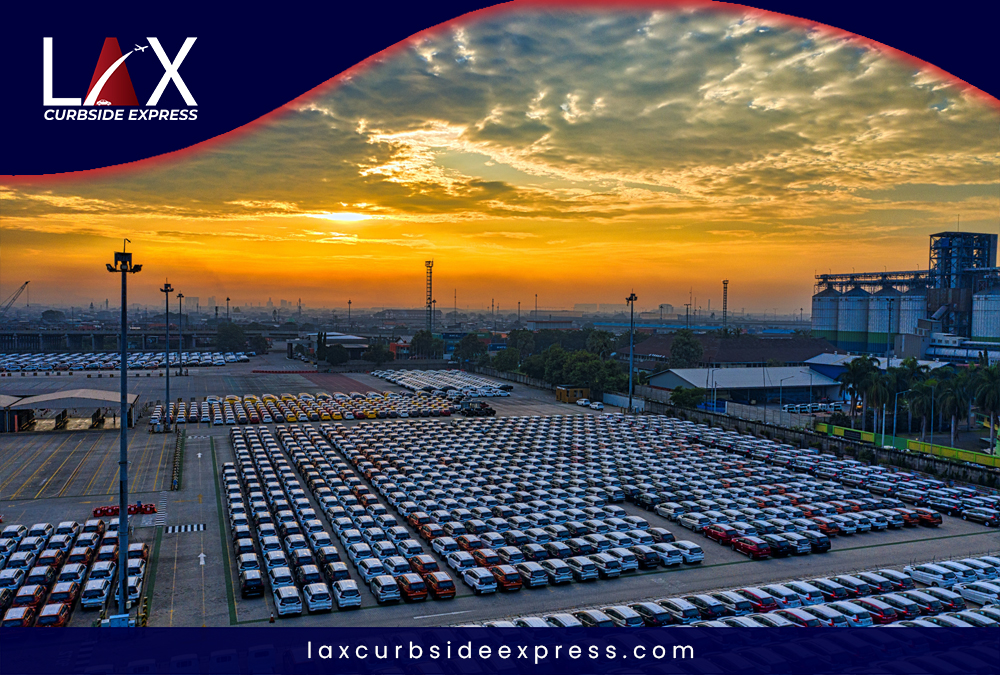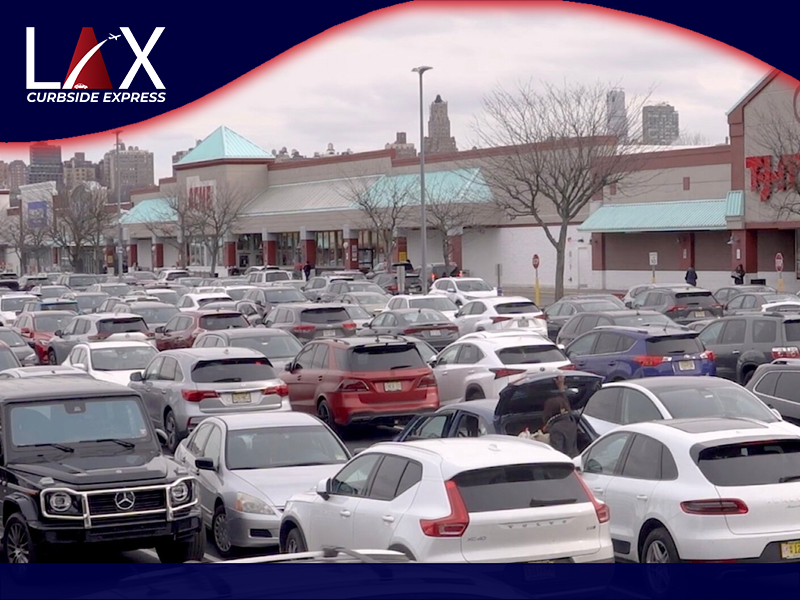
Shifting Gears: Why US Cities Are Falling Out of Love With the Parking Lots?
As part of the development process, local governments have long required property developers to provide a certain number of parking lots. Some communities have resisted changing these rules, but a growing band of cities and states are bucking the trend.
In the US, more than 2 billion car parking spots occupy space that could be used for homes. That’s a staggering amount of land, and it’s causing big problems for cities and their residents.
As the car becomes increasingly popular, cities across America are falling out of love with the parking lots. In recent years, dozens of cities have loosened or scrapped their parking minimums. Most people are also using Valet Parking Services to reduce the stress of parking.
As a result, many downtowns are being pockmarked with stretches of black asphalt that engulf malls, apartment buildings, and commercial strips. These paved paradises have been blamed for some societal problems, including climate change and pedestrian fatalities.
Cost
The cost of parking in US cities is increasing. In many of the nation’s largest cities, monthly parking is becoming more expensive than rent.
In many of the country’s densest, most expensive downtowns, drivers can pay as much as $10 an hour to park in garages and metered street spots. These prices are a far cry from what they once were. People can also go to LAX Curbside Express to get cost-effective parking services.

Nevertheless, people continue to drive, and parking costs are still a significant part of urban life. As cities change their approach to work and mobility, it will become increasingly important to rethink how parking lots are created and how they are used.
This is particularly true in the United States, where parking regulations majorly contribute to congestion. In California, for example, cities are loosening or scrapping minimum parking requirements to ease gridlock and promote new housing developments. It’s an idea that will benefit all parties, as it helps reduce car emissions, encourage transit use, and accommodate a growing number of residents driving less.
Changing Work Arrangements
Across the country, more people are working from home than ever before. But as remote work continues to gain in popularity, it can create new challenges for employers if not managed properly.

As the number of remote workers continues to rise, some also shift their work locations – often across state lines. This can cause problems, such as with tax withholding and diverse state benefit programs, if not properly handled.
In addition, fewer commuters were spending their money in the cities where they worked, which impacted the demand for restaurants and retail outlets. This caused a drop in commercial real estate demand as well.
Increasing Demand for Walking and Biking
While cities continue to struggle with traffic congestion, people are finding alternatives to car travel. More Americans are walking and biking and a growing number of US cities are shifting to prioritizing active mobility infrastructure in their planning and design.
But while cities recognize that walking and cycling are important for their residents, they often need help implementing comprehensive solutions. As a result, they may focus on piecemeal bike lanes, pedestrianized zones, or calming traffic measures instead of taking action to reduce overall road speeds and improve conditions for all users.
This is especially true for communities where walking and bicycling are most underrepresented, including low-income neighborhoods and communities of color. NITC research has shown that Black, Indigenous and other People of Color (BIPOC) walk at higher rates than white people and are disproportionately injured or killed while walking.
Climate Change
As the Earth warms, cities become increasingly vulnerable to various climate change impacts, from storm surges and floods to extreme heat waves and ice storms. This poses a significant threat to the health and well-being of urban residents.

In addition, the impact of climate change can be particularly harmful to people living in densely populated areas, who often live in hotter urban heat islands than the surrounding natural landscape. This leads to various human health problems, including heat stroke and severe air pollution.
While the climate is a complex phenomenon with many causes, the most prominent impact is caused by humans’ emissions of greenhouse gases, as global emissions continue to rise, climate change will increasingly impact the Earth.
People are driving less.
Cities have always been built with cars in mind, but now there’s a growing movement to reduce driving. Those who don’t want to drive are finding alternative ways to get around, and those who don’t have cars at all are turning to public transportation and bike sharing.
- In addition, many millennials are using technology to plan their routes on foot, by bicycle, or by public transportation. And while they still drive a lot, they drive fewer miles per mile than their Gen X and baby boomer counterparts.
- Another reason people are driving less is that gas prices have skyrocketed in recent months. The average price of a gallon is now at an all-time high, and it’s not expected to come down any time soon.
- This is a huge problem because it’s making it more expensive for everyone to use their cars, especially people with a family. Plus, with the rise in congestion, it’s becoming harder for people to get to work on time, impacting their productivity.
- A third reason is that people have simply started to feel more comfortable commuting by alternative means, such as cycling or walking. This is an important trend to watch, as it’s likely to continue in the future.
- Finally, a fourth reason is that Americans shift their attitude toward the car. The study found that the proportion of American households that don’t own a vehicle has risen significantly, particularly in urban areas. In 2013, a total of 9.1% of American households did not own a vehicle.
People are choosing to live without a car.
A shift is brewing in US cities. While most people still own cars, many of them choose not to. This can be for many reasons. It can be a way to save money, reduce pollution, improve your health, and even get more active.
According to the Automobile Association, the average American spends $9,000 a year on their car, including premium insurance and gas costs. These expenses are particularly significant if you have a lot of trips or need to get to different places frequently.
That’s why it’s important to ensure you’re living in a city with reliable public transit options. Frequently, these options are better than having your vehicle because you won’t need to pay for parking or insurance.
And while you’re at it, choosing a city with great walkability and bike infrastructure is also important. This will help you avoid traffic and parking problems, too.
This is especially true in larger cities with well-developed transit systems like New York, Los Angeles, or Chicago. You can take a bus or train to most destinations without driving in those cities.
But you might have trouble getting around if you live in a smaller city or town. There might not be enough buses or trains to reach every destination in the area, and it can be difficult to find a safe, convenient place to park.
Conclusion
Thankfully, more cities than ever are making it easy for people to avoid owning a car. In many of these cities, residents can rent a vehicle for an hourly rate or buy a cheap scooter or bicycle to commute or run errands.
Read Also: Laying Out a Parking Lot Based on Dimensions – A Detailed Discussion
This isn’t just good for your wallet: it can also push local leaders to make their transportation systems more accessible and equitable. This can include better sidewalks and bike lanes, better parking, or even more robust pedestrian safety measures. It can also give you more civic engagement and a sense of belonging in your community.
FAQs
Why Do People Face Parking Problems in Cities?
Many cars in the city create a gap between the parking demand and supply. This shows that there is a need for an efficient parking system to solve the problem.
Why is Parking a Big Problem?
Parking is a huge land use. Depending on location, it can take up to three times the total land area of the entire US economy.
Parking is a big problem because it encourages driving and contributes to traffic congestion, crashes, and environmental damage. It also makes neighborhoods and cities less walkable, discourages infill development, and adds to business overhead costs and taxes that are borne by consumers.
What Percentage of American Cities Are Parking Lots?
Despite decades of attempts to make cities more liveable, car storage has become an omnipresent part of the landscape.
To find out, USGS researchers compiled data on parking lot coverage over time to determine how much land has been devoted to vehicle storage in five major American cities — Seattle, Philadelphia, New York City, Des Moines, and Jackson.
How Can We Solve the Problem of Parking in Cities?
How can we solve the problem of parking in cities?
As more people move into urban areas, parking becomes a major issue.
While this concerns motorists and local businesses, it can be especially frustrating for drivers who spend too much time searching for an available spot.
What is the Future of Parking?
- Future of Parking
The future of parking is rapidly changing, and if cities want to thrive, they must adapt and take advantage of these trends.
-
Self-Parking
Smart sensors detect empty spaces and guide drivers to them, eliminating the need for circling lots aimlessly.
